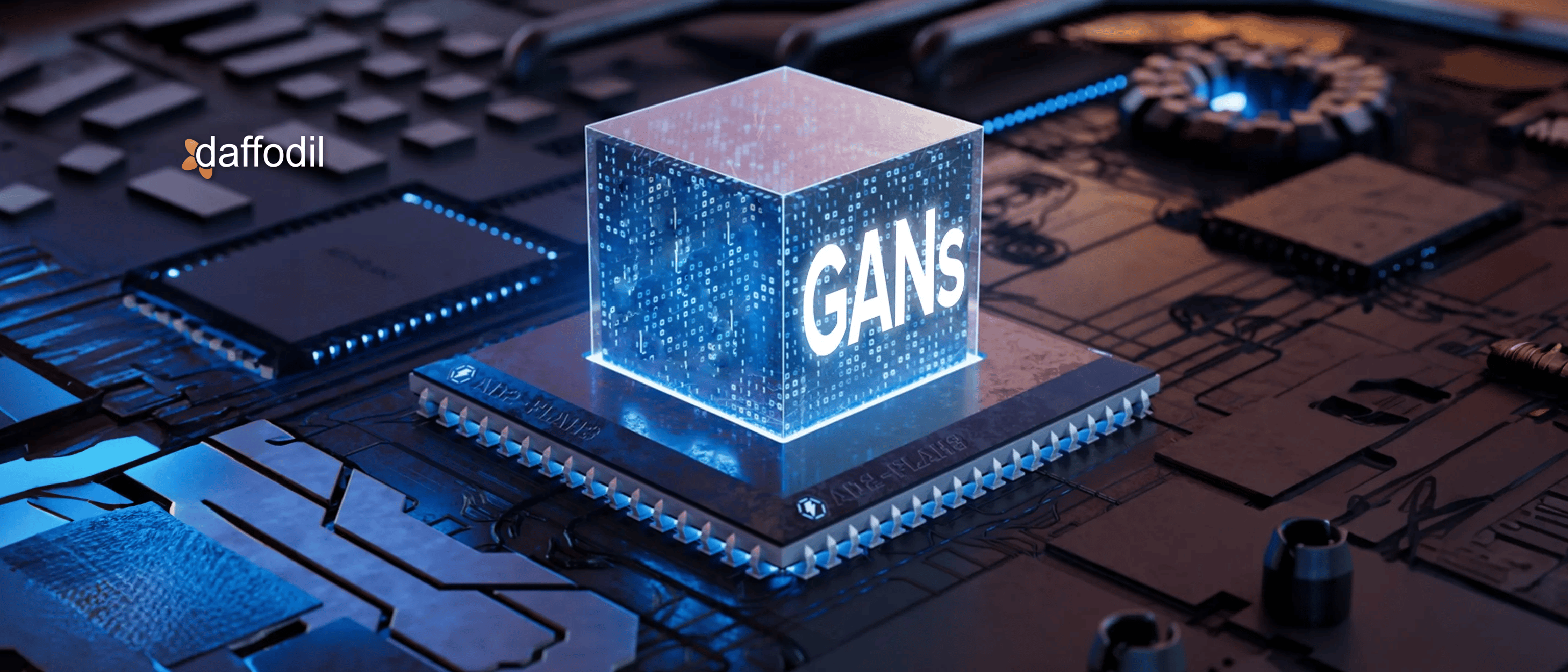
In a world where machine learning is ubiquitous, the power of this technology is undeniable. From helping diagnose illnesses to predicting customer behavior, machine learning has disrupted countless industries with its endless possibilities. However, with great power comes great responsibility, and one of the greatest challenges facing machine learning is its susceptibility to deception.
In fact, recent studies have shown that nearly 90% of organizations have experienced some form of AI bias, leading to incorrect data classifications and the rise of dangerous Deepfake technology. To combat this, researchers have turned to a powerful and innovative solution: Generative Adversarial Networks, or GANs.
By pitting two neural networks against each other in a virtual tug-of-war, GANs have the ability to generate realistic counterfeit data that can help detect and prevent the spread of harmful Deepfakes.
Whether you're a business leader, data scientist, or AI enthusiast, this comprehensive guide is designed to equip you with the knowledge and skills required to effectively harness the power of GANs. Explore its architecture, types, diverse applications, and techniques, and how they are transforming the future of artificial intelligence.
What is GAN in Deep Learning?
Generative Adversarial Networks, or GANs, are a class of neural networks that take a game-theoretic approach to unsupervised learning. GANs were first introduced by Ian J. Goodfellow and his colleagues in 2014 and have since become one of the most interesting ideas in machine learning.
The basic idea behind GANs is that they consist of two neural network models - a generator and a discriminator - that learn from each other through an adversarial process.
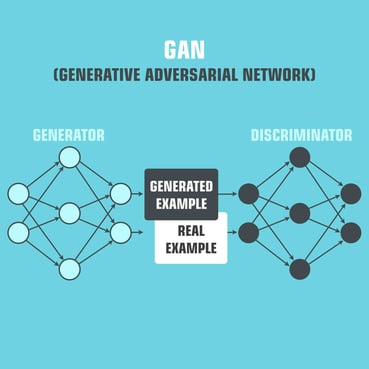
The generator network is responsible for producing synthetic data by taking in a random noise/source as input and producing an output that mimics the characteristics of the training data.
The discriminator network, on the other hand, is trained on a set of training data, which consists of both real and fake data. Its main goal is to distinguish between the real data and the fake data generated by the generator.
As the generator learns to create more realistic fake data, the discriminator's job becomes more challenging, and it needs to improve its ability to differentiate between real and fake data. These two networks work together in a cycle of training and feedback until the generator produces data that is indistinguishable from the real data.
For instance, the Portrait of Edmond de Belamy sold for $432,500 at a Christie's auction in 2018. The artwork was generated by a GAN trained on a database of portraits from the 14th to the 20th century.
9 Major Types of GANs
There are several types of GANs, each with its own unique approach and application:
Vanilla GANs: Vanilla GANs are the simplest type of GANs and were the first type introduced in the original GAN paper. They consist of two neural networks, a generator and a discriminator, which are trained in a two-player minimax game. The generator learns to produce fake data that resembles real data, while the discriminator learns to distinguish between real and fake data.
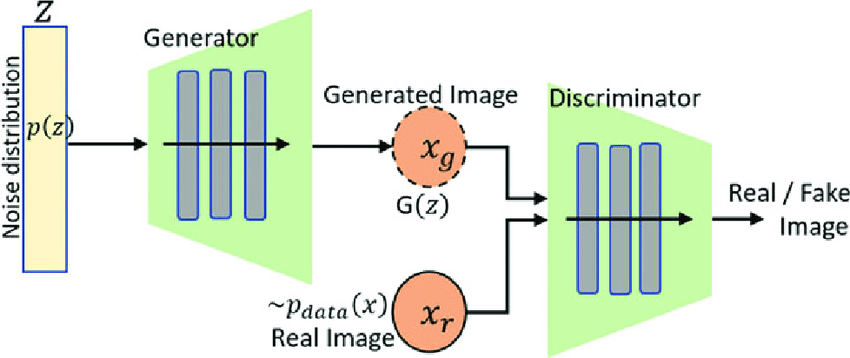
Image source- ResearchGate
Deep Convolutional GANs (DCGANs): DCGANs are a type of GAN that use convolutional neural networks (CNNs) in the generator and discriminator architectures. They were introduced in 2015 by Radford et al. and are now one of the most widely used types of GANs. DCGANs have been shown to produce high-quality images and are often used in image synthesis tasks.
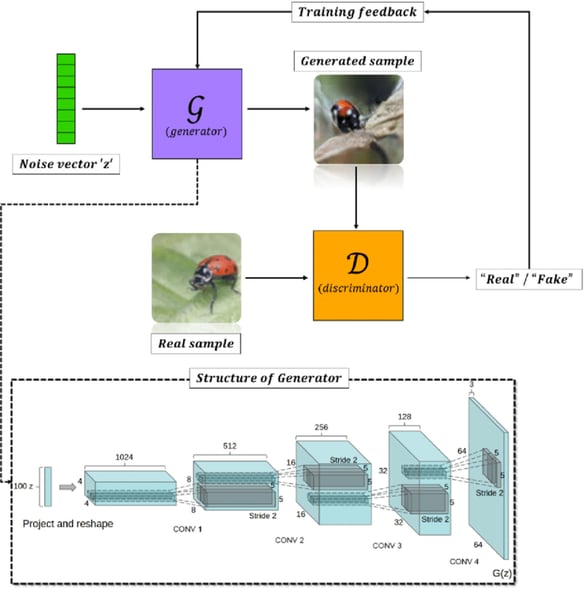
Image source- ResearchGate
CycleGANs: CycleGANs are used for image-to-image translation tasks, where we want to convert an image from one domain to another. For example, we can use CycleGAN to convert images of horses to zebras. The CycleGAN consists of two generators and two discriminators. The first generator converts images from domain A to domain B, while the second generator converts images from domain B to domain A. The two discriminators help in maintaining the consistency of the generated images.
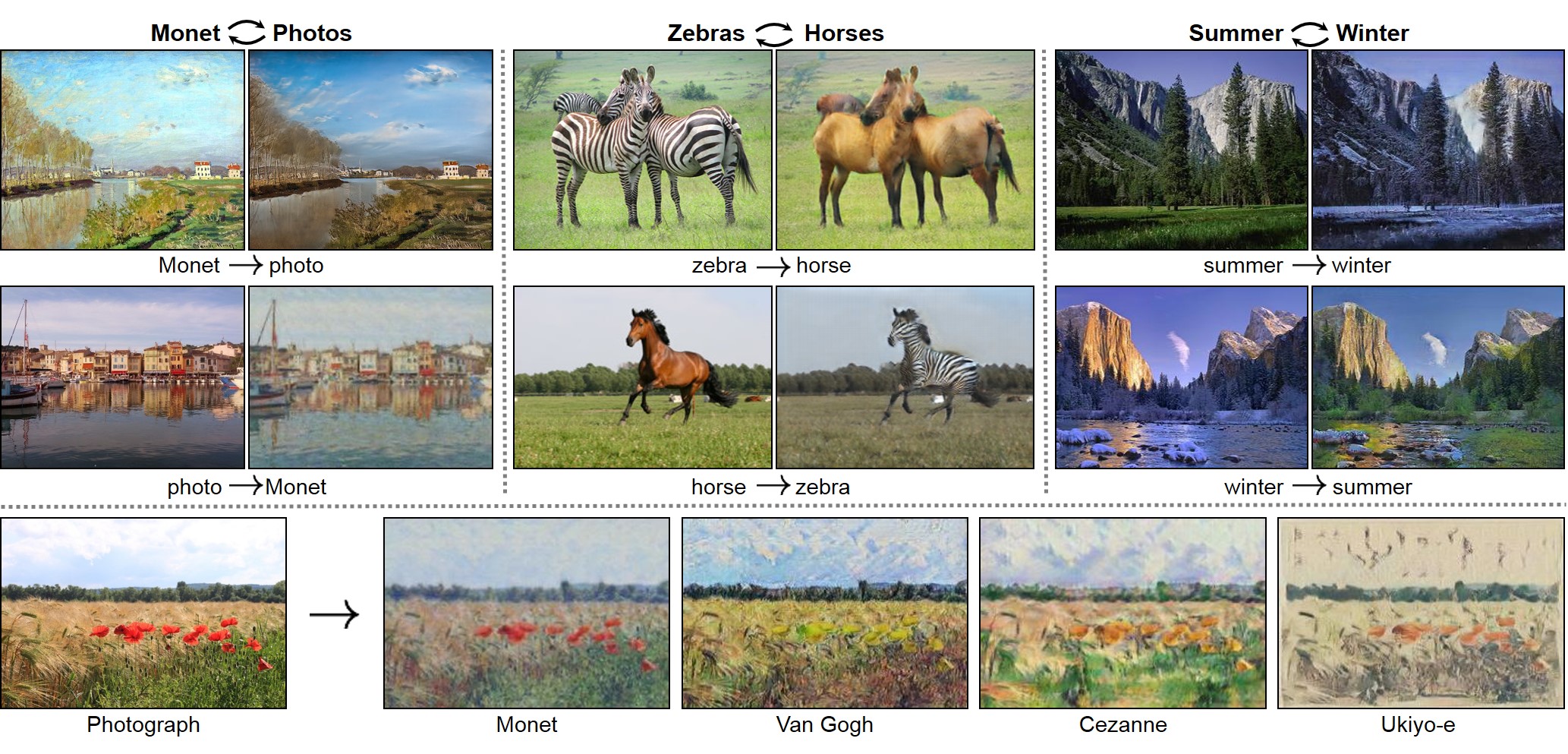
Image source- GitHub Pages
Conditional GANs (cGANs): cGANs are a type of GAN that take additional information as input to both the generator and discriminator networks. This additional information can be used to control the output of the generator. For example, if we want to generate images of cats and dogs, we can provide the generator with the label of the animal along with the noise vector.

Image source- MDPI
StyleGAN: It is a state-of-art GAN model that is widely used for generating high-quality, realistic images. What sets StyleGAN apart from other GAN models is its ability to control the style and features of the generated images. This means that users can specify the desired features of the image, such as the size, shape, and color, and StyleGAN will generate an image that matches those specifications.
For instance, StyleGAN was used to generate images of realistic-looking people who don't actually exist, such as in the popular website "This Person Does Not Exist." By allowing the user to control certain features, StyleGAN produces images that are so realistic that they can be difficult to distinguish from real photographs.

Image source- SematicScholar
6. StarGAN: StarGAN is a type of GAN used for multi-domain image-to-image translation. It can translate an input image to multiple target domains with a single generator. For example, it can convert a male face to a female face or vice versa, and can also change hair color and style. For example- face attribute conversion, where the generator can create a new image with different ages, gender, and hairstyle based on the input image.
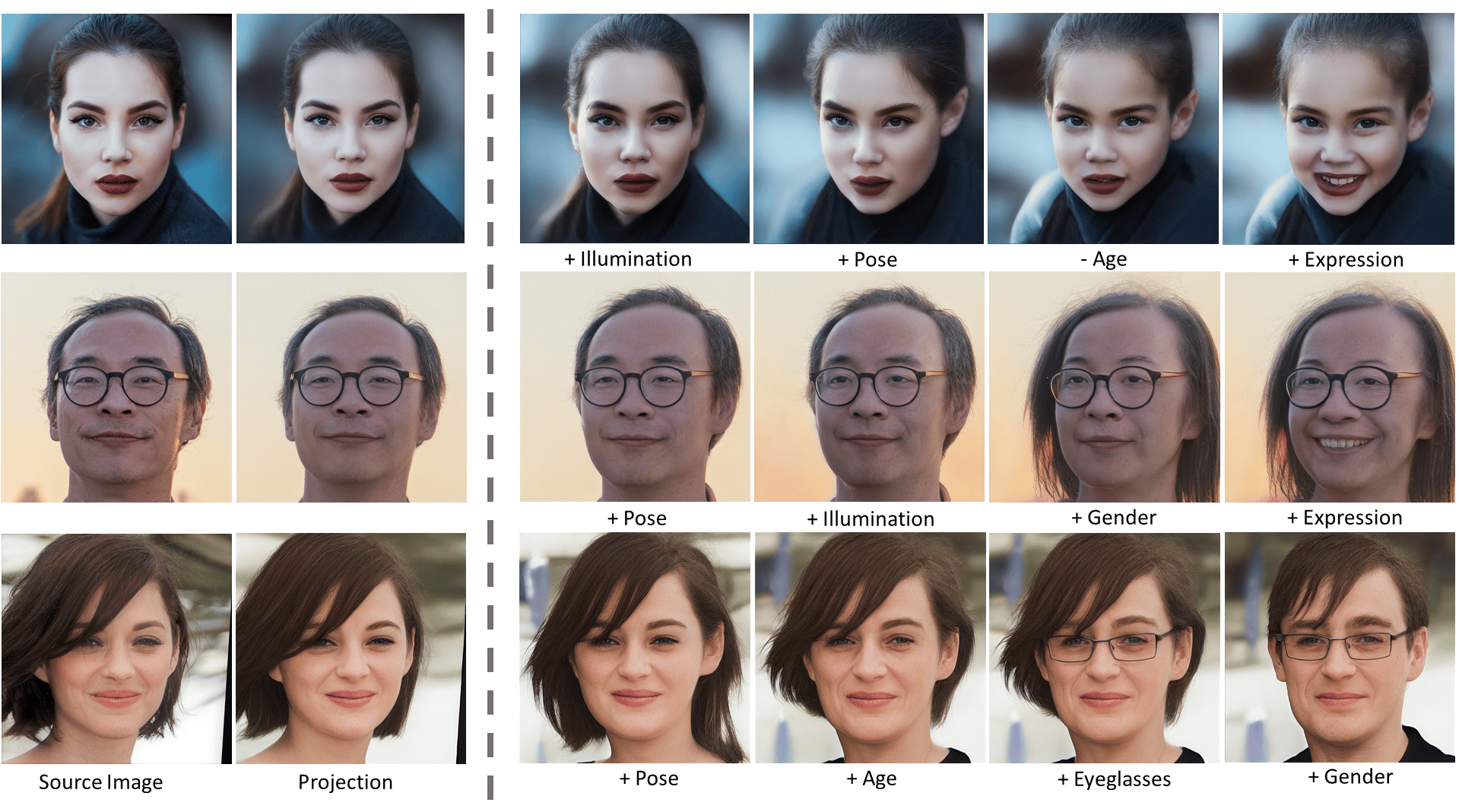
Image source- arXiv Vanity
7. Progressive GAN: This type of GAN generates high-resolution images in a step-by-step manner. It starts with a low-resolution image and gradually increases the resolution by adding more layers to the generator and discriminator networks. This type of GAN is particularly useful for generating high-quality images of objects and scenes, such as realistic landscapes and buildings or even dogs.
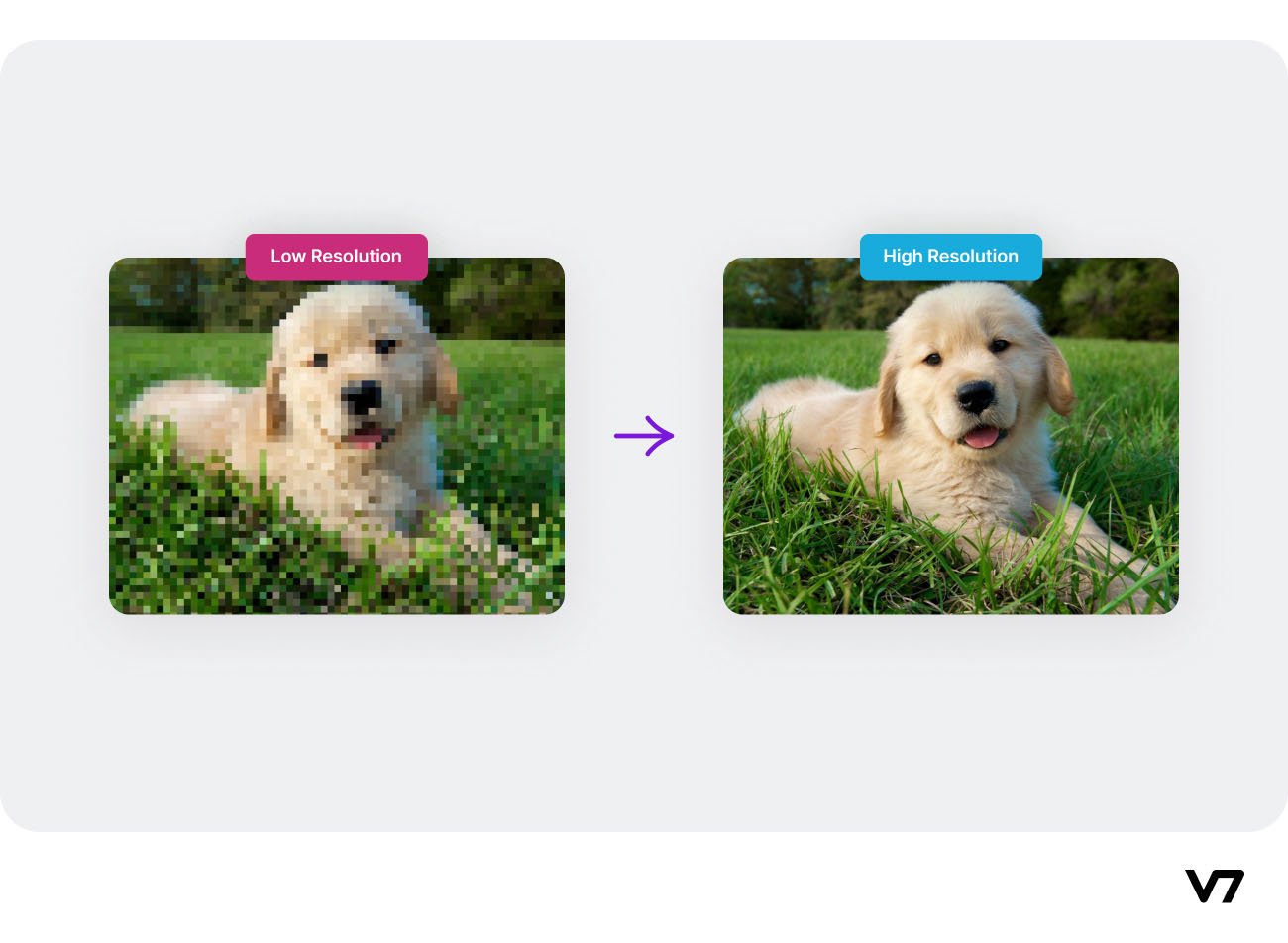
Image source- v7 labs
8. StackGAN: StackGAN is a type of GAN used for generating high-quality images from text descriptions. It consists of two stages: the first stage generates a low-resolution image from the text description, and the second stage refines the image to a high-resolution image. It is particularly useful for creating realistic images of objects and scenes based on textual descriptions.
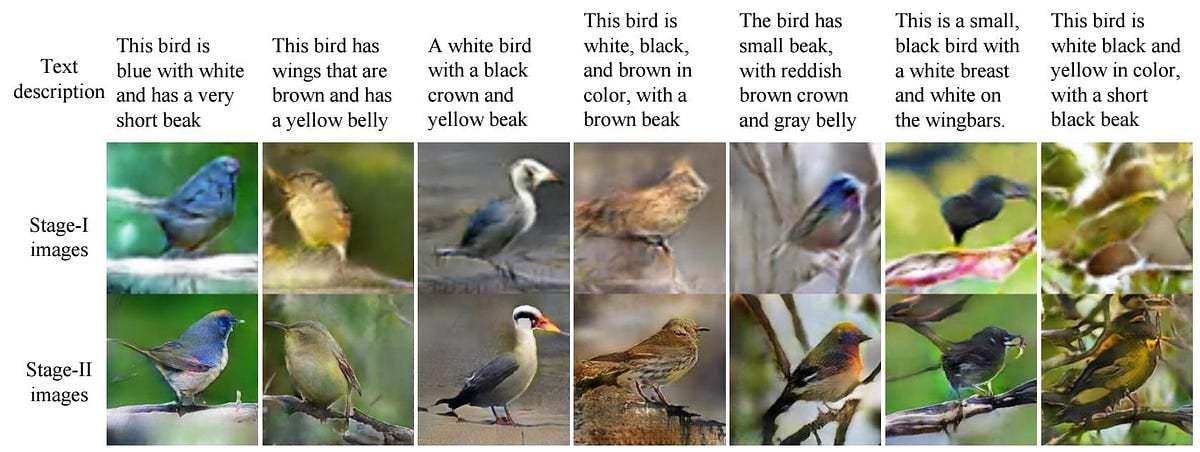
Image source- Medium
9. Pix2pix: Pix2pix is used for image-to-image translation. It is particularly effective for converting low-quality images to high-quality images by learning from paired examples. For example, it can convert a black-and-white sketch to a color image or enhance the resolution of a low-resolution image. For example– image colorization, where the generator can create a new colored image based on the grayscale input image.
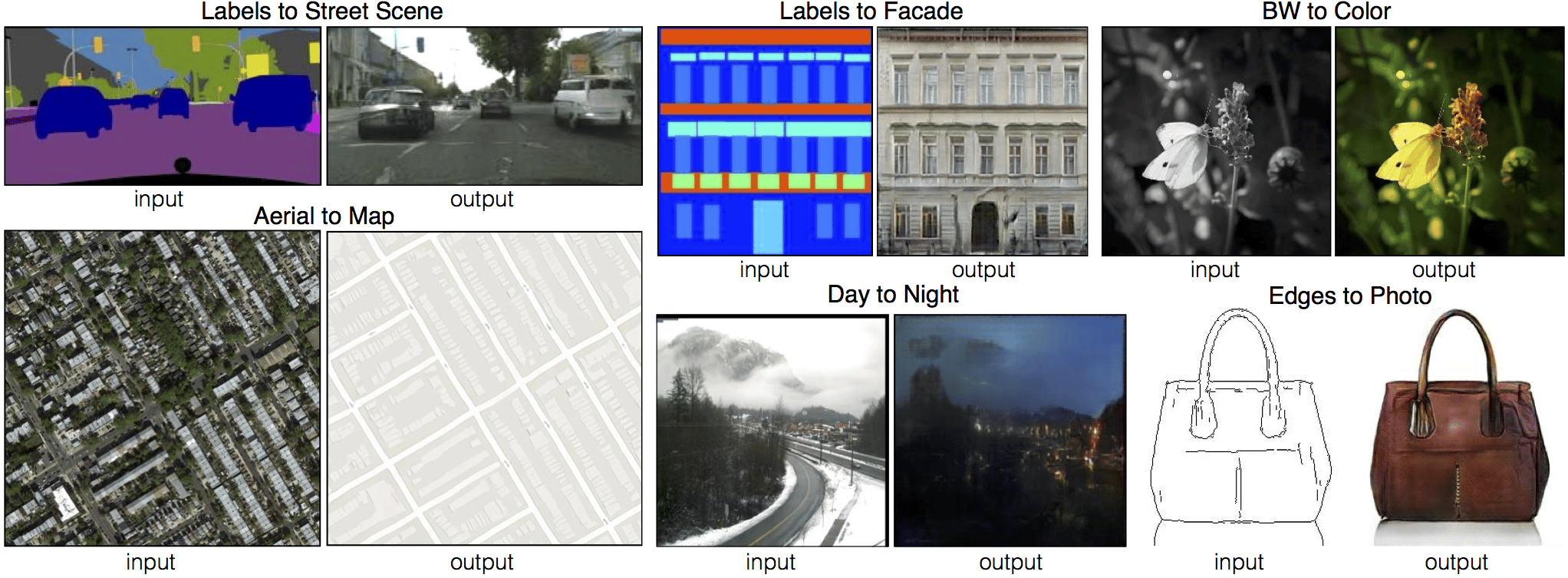
Image source- Medium
Top 25 Applications of GANs Across Multiple Industries
GANs are a powerful tool that can be integrated into various industries to enhance their everyday workflows and applications. Although there may be some existing limitations, the potential applications of GANs are vast and can help businesses grow their bottom line and improve customer experiences.
We have identified several major industries that can benefit from the integration of GANs, including fashion, gaming, art, healthcare, and manufacturing. By utilizing GANs in these industries, businesses can take advantage of their capabilities to improve product design, develop innovative solutions, generate unique content, and enhance overall customer satisfaction. In the following sections, we will explore the different possibilities of integrating GANs in each industry.
Healthcare
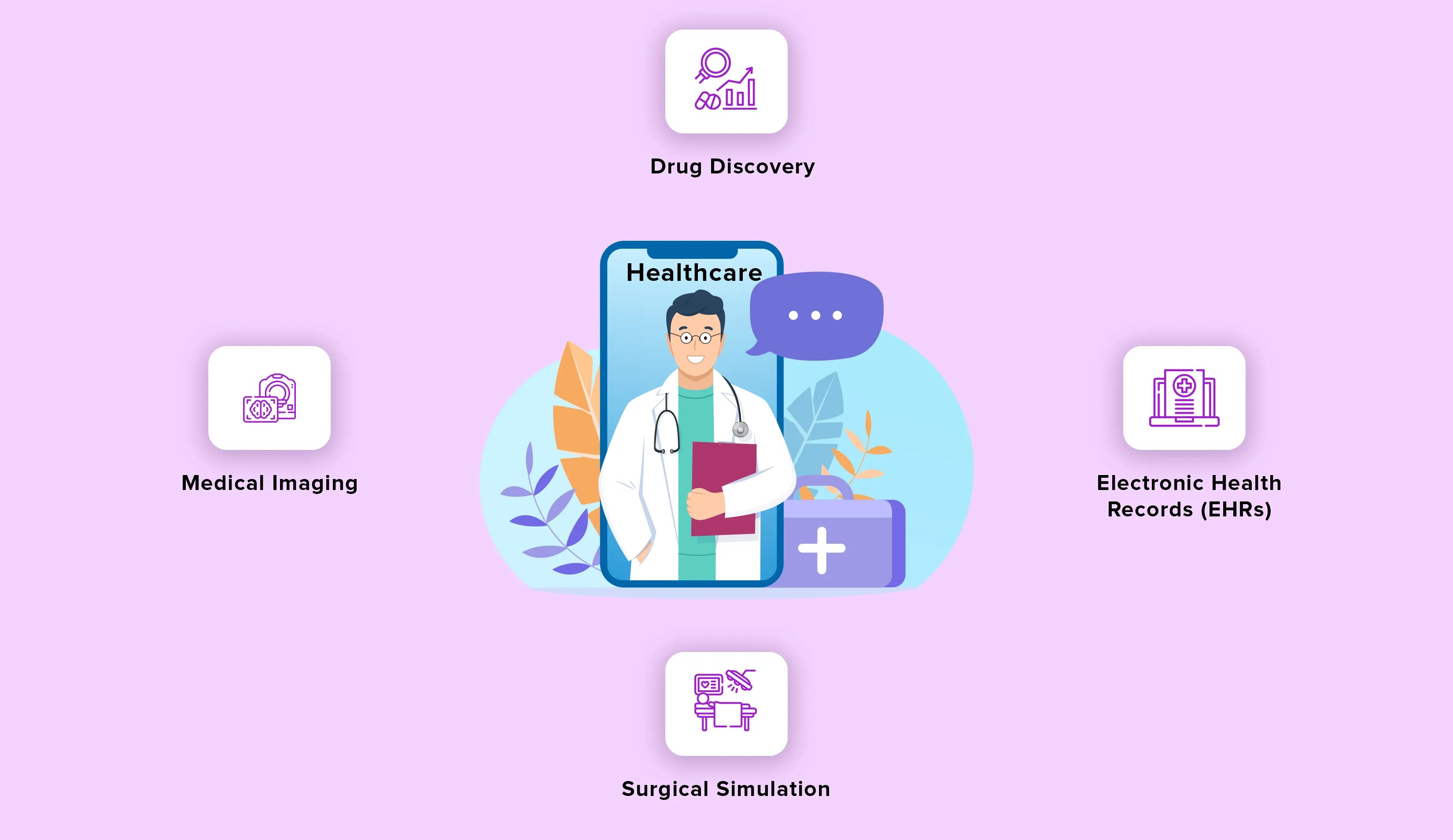
1. Medical Imaging: In the field of medical imaging, GANs have the remarkable ability to transform the way we work with limited data. By generating synthetic medical images, GANs become invaluable tools in situations where medical data is scarce. These synthesized images can be utilized to train more accurate models for detecting diseases such as cancer, tumors, and other abnormalities. Moreover, GANs can also enhance the quality of images, transforming low-resolution scans into high-resolution, detailed visuals.
2. Drug Discovery: GANs hold tremendous potential for accelerating the drug discovery process. By leveraging their capabilities, GANs can generate entirely new molecules with specific properties that make them viable candidates for potential drugs. This opens up exciting possibilities for discovering new treatments while reducing the costs associated with drug development.
3. Electronic Health Records (EHRs): Maintaining patient privacy and confidentiality is of utmost importance in healthcare. GANs offer a solution by allowing the creation of synthetic electronic health records. These synthetic records serve as invaluable resources for training models to forecast patient outcomes and identify potential health risks. By utilizing synthetic EHRs, we can protect sensitive patient information while still gaining valuable insights.
4. Surgical Simulation: GANs play a crucial role in surgical training and simulation. By generating synthetic surgical videos, GANs provide medical students and surgeons with realistic training scenarios. This enables them to enhance their surgical skills and minimize the risks associated with errors during real surgeries.
Gaming
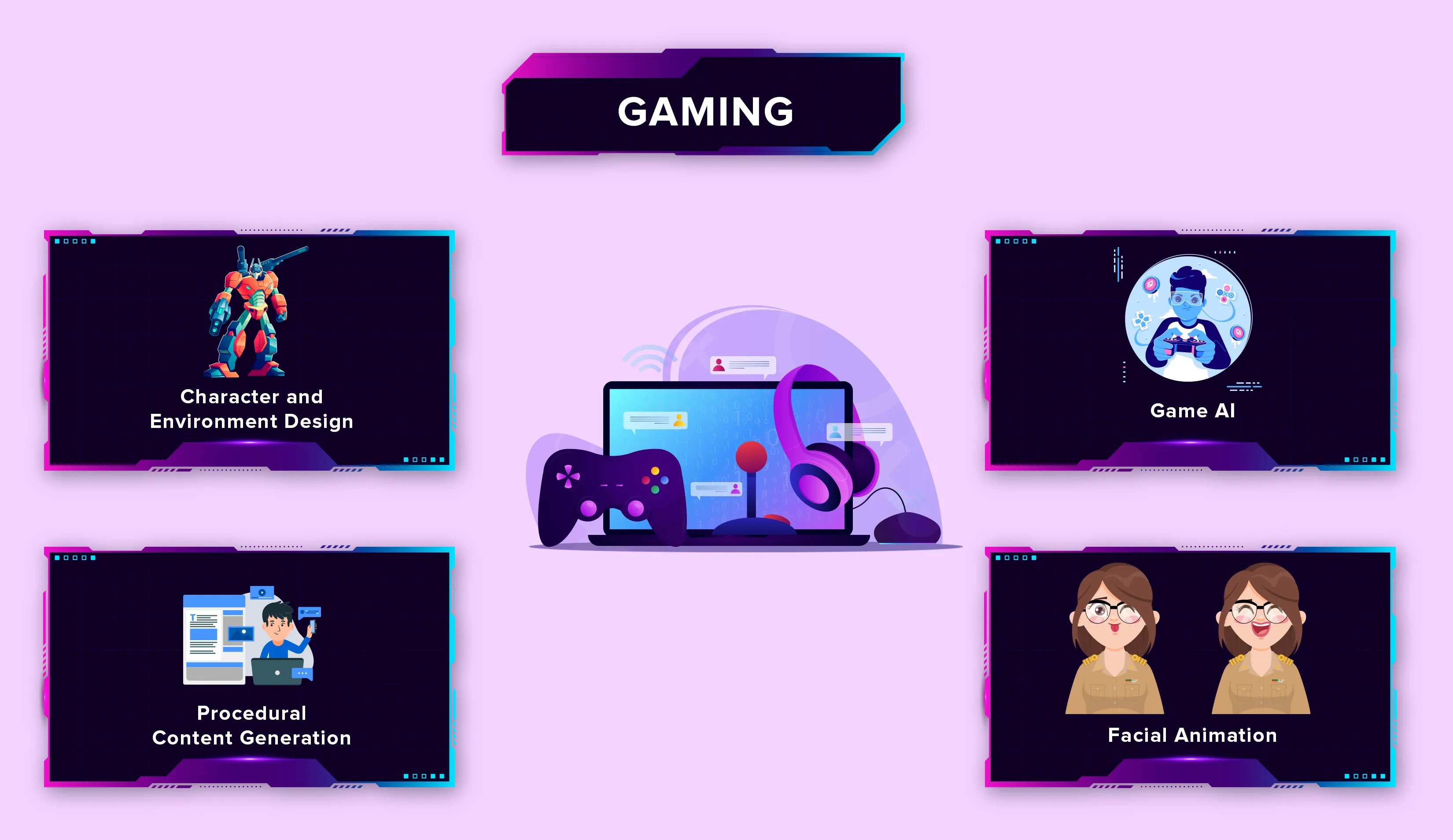
1. Character and Environment Design: Game designers can now bring their ideas to life using GANs. By employing these powerful networks, they can generate highly detailed and lifelike 3D models of characters and environments, streamlining the design process while reducing time and costs.
2. Procedural Content Generation: GANs can inject endless variety into games by generating levels, maps, and items on the fly. Players can explore and discover unique content that's different every time they play, without the need for game developers to create it all by hand. This can save time and money for developers and create a more engaging experience for players.
3. Game AI: Take your opponents to the next level using GAN-powered game AI. By learning from player behavior, GANs can create challenging adversaries that adapt and respond with unpredictable strategies and tactics. Imagine playing a game where the enemies anticipate your every move, creating exciting and dynamic gameplay.
4. Facial Animation: With GANs, game developers can create realistic facial animations for characters, making them feel more lifelike and emotionally impactful. You can build applications where players can connect with the characters on a deeper level, feeling their pain, joy, and every emotion in between.
Finance
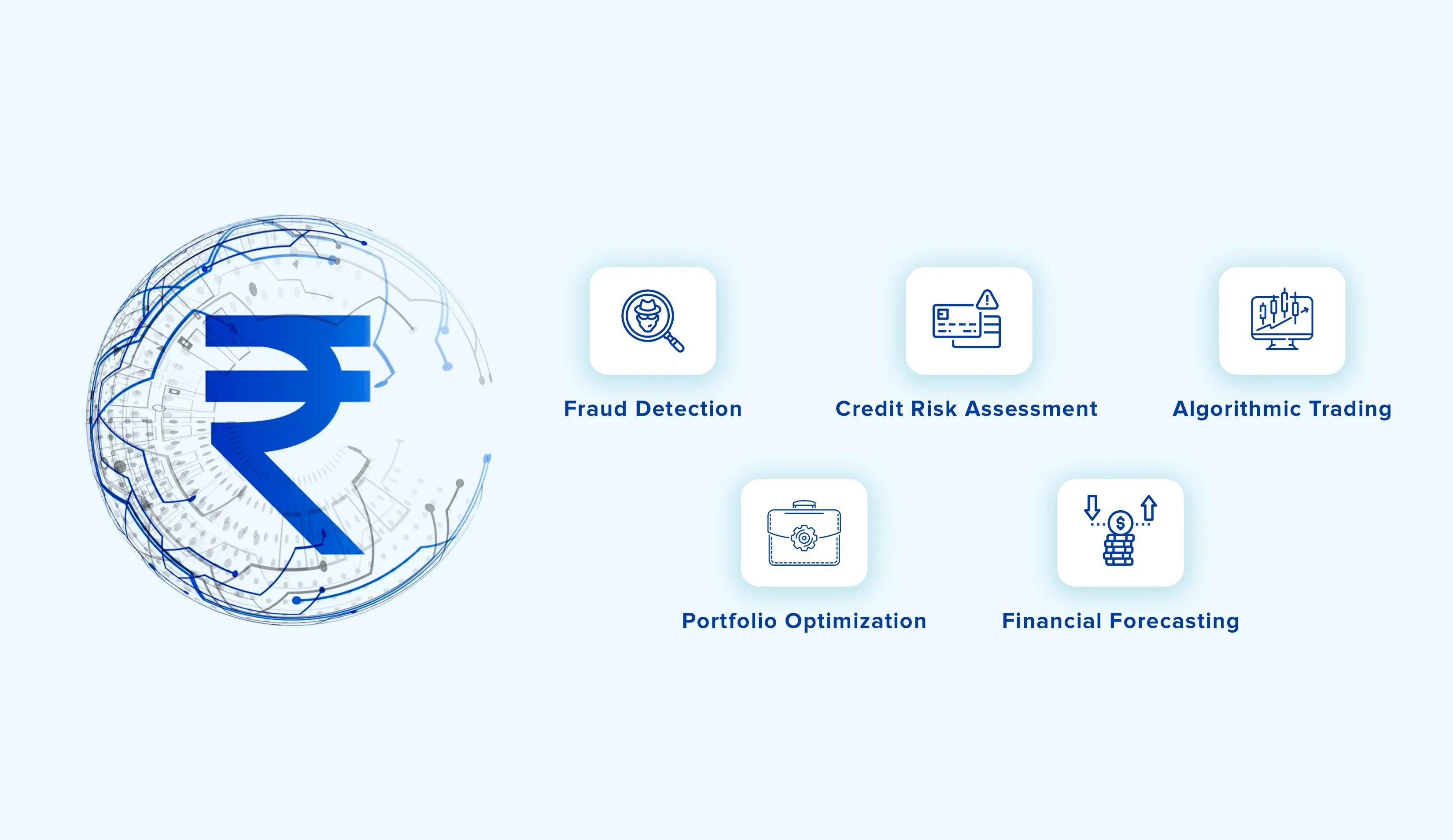
1. Fraud Detection: Protect your financial institution from fraudulent activities with the help of GANs. By analyzing patterns and detecting anomalies in transaction data, GANs swiftly flag suspicious activities, allowing you to take proactive measures. It enhances your fraud detection capabilities and safeguards your institution, saving time and resources while ensuring the security of your customers.
2. Credit Risk Assessment: Make smarter lending decisions by leveraging the predictive power of GANs. These algorithms analyze credit histories, income levels, and other crucial factors to provide valuable insights into the likelihood of default. With GANs, you can minimize risk, optimize credit extension, and improve your overall financial health.
3. Algorithmic Trading: By simulating realistic market scenarios, GANs also help traders test their strategies before executing them in real-time. These simulations generate synthetic stock prices based on real market data, enabling traders to identify patterns and trends accurately.
4. Portfolio Optimization: Optimize your portfolio allocation using GAN-driven insights. GANs analyze historical data and market trends to identify the most profitable asset allocation strategies. By simulating the performance of different portfolios, GANs help you maximize returns while minimizing risk. Achieve your financial goals with confidence using GANs' intelligent portfolio optimization capabilities.
5. Financial Forecasting: Harness the power of GANs to make informed financial decisions. These algorithms analyze vast amounts of data, uncovering patterns and trends to provide valuable insights into market movements. Whether it's predicting stock prices or evaluating economic indicators, GANs equip investors and financial institutions with the knowledge to make better decisions, ultimately leading to improved financial outcomes.
Music
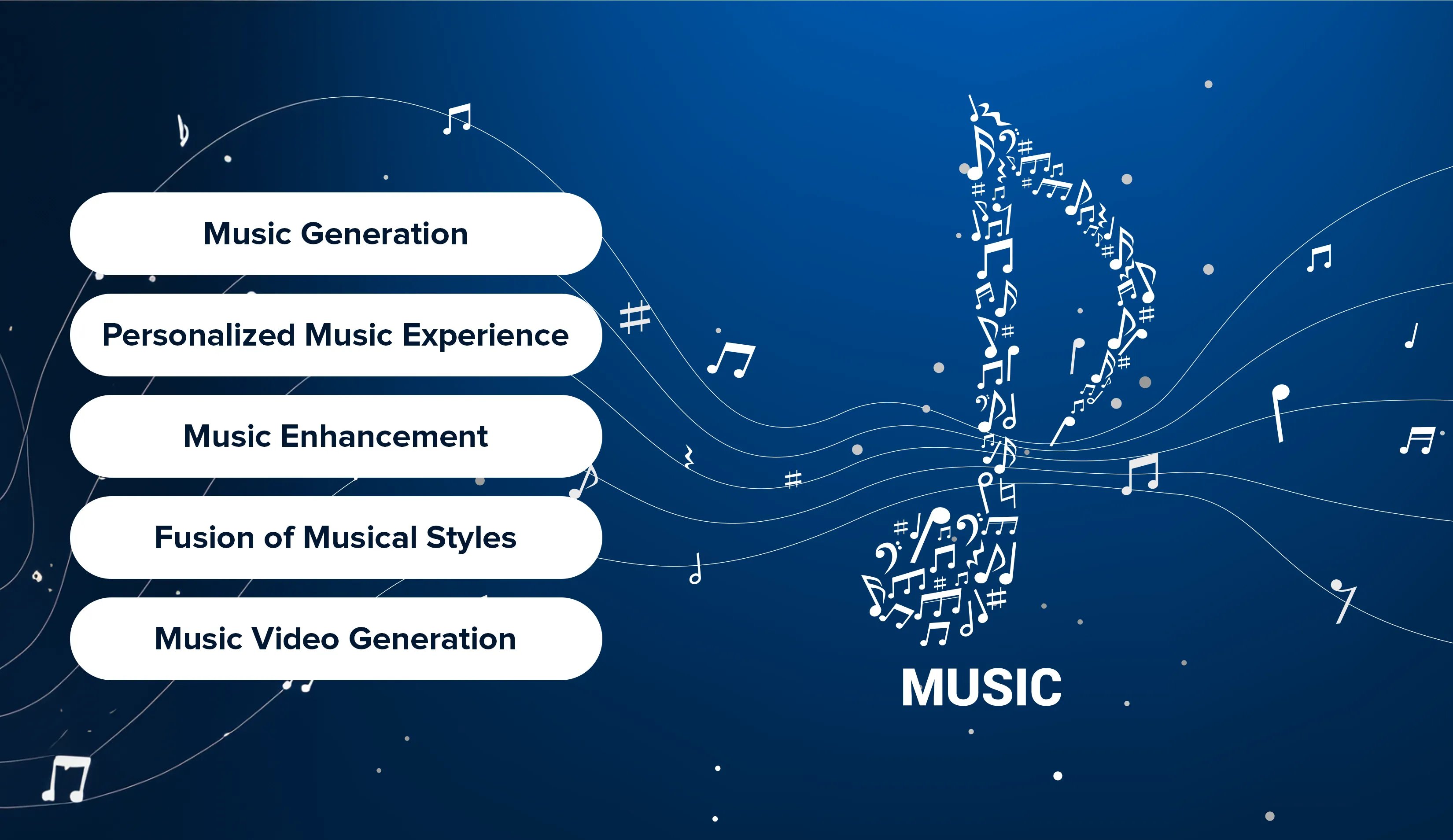
1. Music Generation: With GANs, musicians can generate new and original music pieces by feeding the network with a large dataset of existing music. By learning the patterns and structures of different genres of music, GANs can create new melodies, rhythms, and even lyrics.
2. Tailored Music Experience: GANs bring personalization to the forefront of music streaming. By analyzing audio features like pitch, tempo, and timbre, these algorithms classify music into various genres, moods, and styles. The result? Personalized playlists that cater to individual preferences. Whether it's a high-energy track for a workout or a soothing melody for relaxation, GANs ensure that every listener enjoys a tailor-made music experience.
3. Music Enhancement: GANs can enhance the quality of music recordings by removing noise and distortion. By training on a large dataset of clean and noisy audio recordings, GANs can learn to remove unwanted noise and improve the overall quality of the recording. This can help musicians and producers to polish their recordings and create a better listening experience for their audience.
4. Music Video Generation: GANs can also generate music videos by learning the style and structure of different music videos. By combining different visual elements and effects, GANs can create new and creative music videos that match the style and mood of the music. This can help musicians and producers to promote their music in a more engaging and visually appealing way.
Education
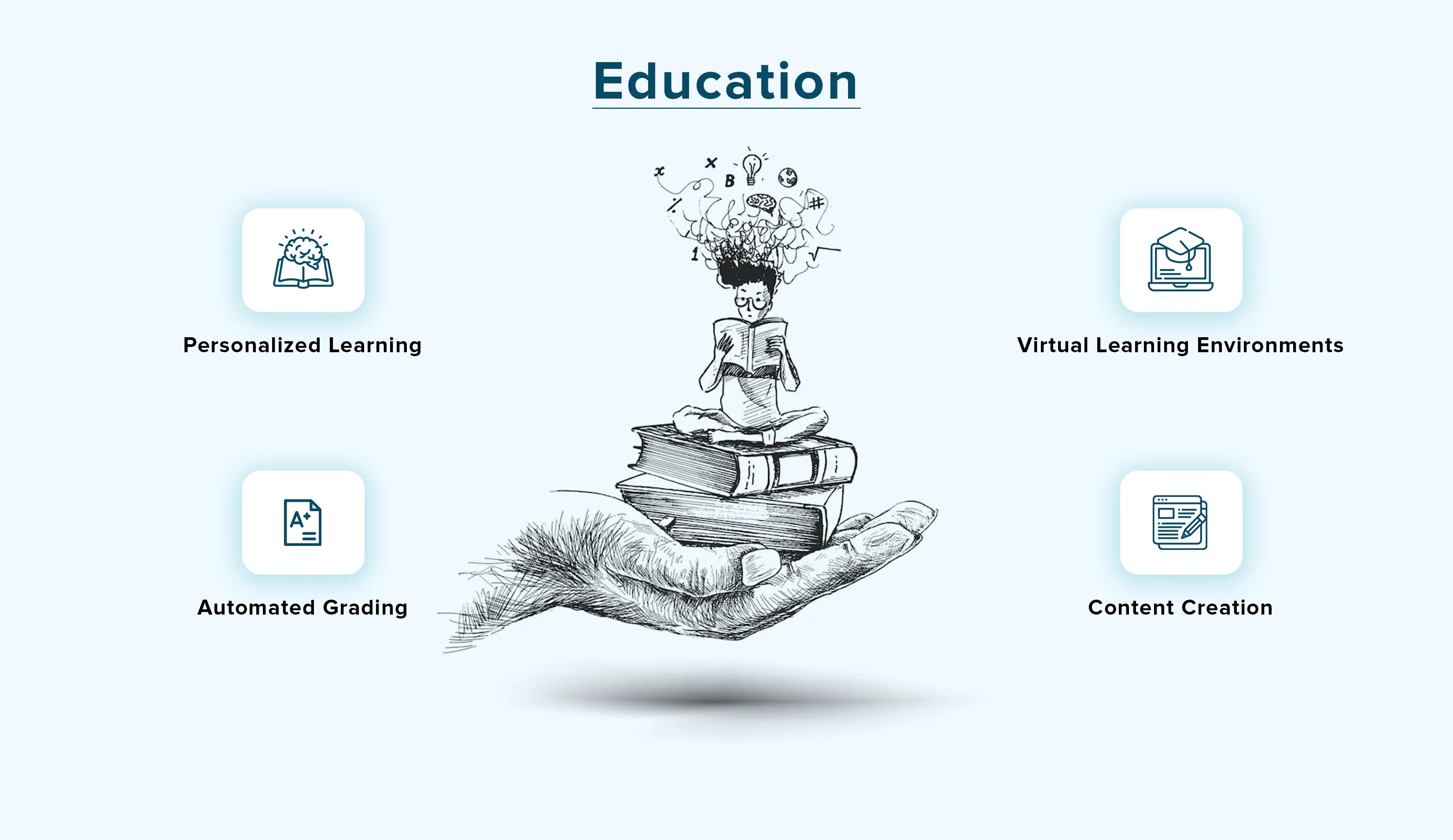
1. Personalized Learning: Students can now say goodbye to one-size-fits-all learning experiences. GANs can be trained on a student's past academic performance and identify the optimal teaching strategies and learning materials for that student. It's like having a personal tutor that adapts to your unique needs and helps you learn in a way that suits you best.
2. Automated Grading: Educators can save time and reduce the potential for human bias in grading by automating the grading process. By learning the patterns and structures of correct answers, GANs can accurately grade student work and provide feedback in real-time. This ensures that students receive prompt feedback and teachers can focus on providing more personalized learning experiences.
3. Virtual Learning Environments: GANs can transform the way students learn by creating immersive and interactive virtual learning environments. For instance, students can now experience complex physics and chemistry simulations in a 3D virtual environment that mimics real-world scenarios. This allows them to explore and understand complex concepts in an interactive way.
4. Content Creation: GANs can even generate educational content such as textbooks, videos, and quizzes that are unique and engaging. For example, GANs can be trained on a large dataset of existing textbooks to create new and original educational materials that cover the same topics. This can help educators save time and provide students with content that is fresh and relevant.
Fashion
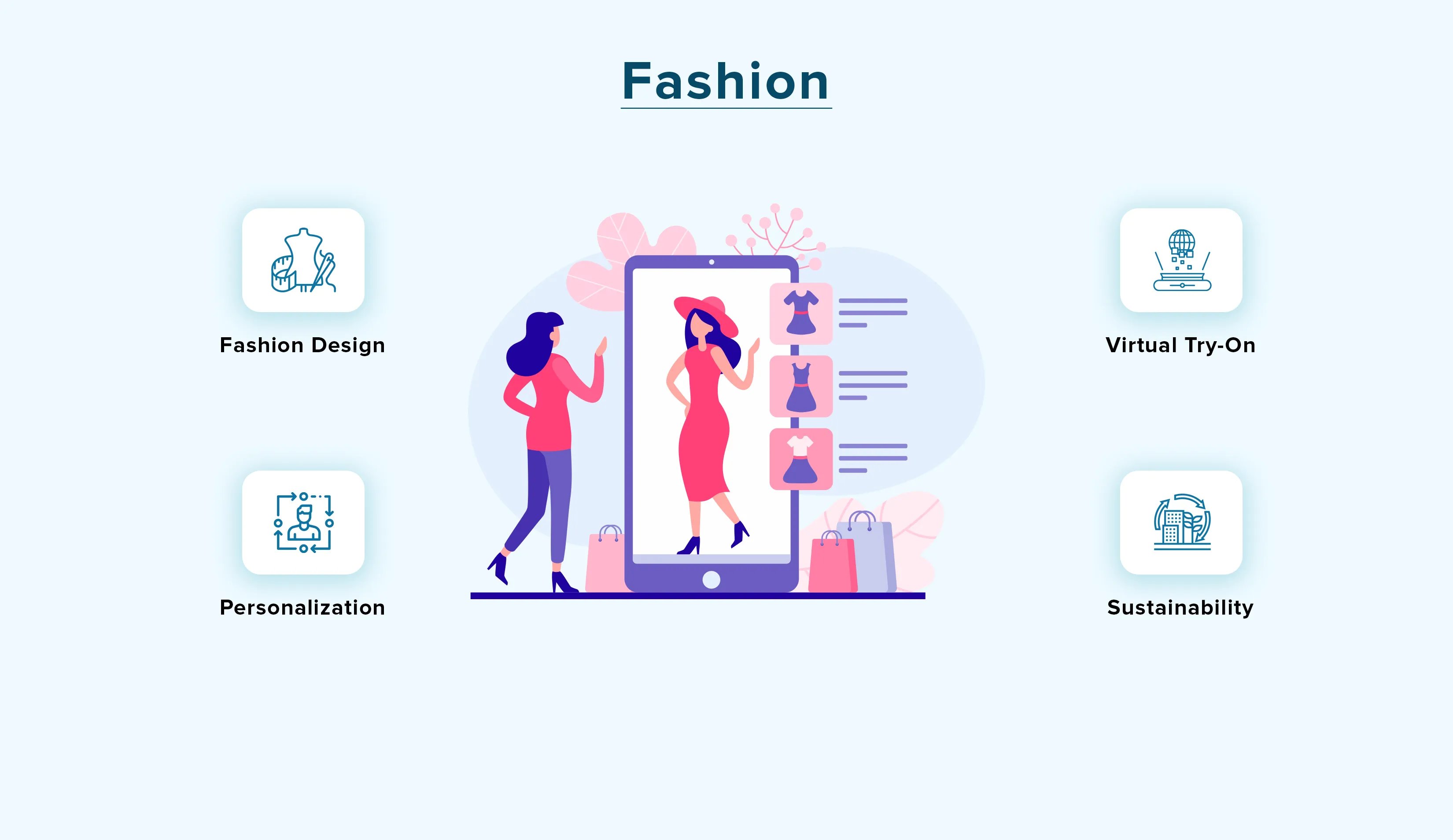
1. Fashion Design: GANs can generate new and unique designs for clothing items, including patterns and textures. Moreover, it can remove unwanted features, change colors, or adjust the fit of clothing in the image. By doing so, designers can save time and resources compared to traditional methods of image editing, which can help speed up the design process and improve overall efficiency.
2. Personalization: GANs can generate personalized recommendations for customers based on their preferences and shopping behavior. This can enhance the customer experience and increase customer satisfaction. By learning from data on individual shopping habits and preferences, GANs can create tailored recommendations for each customer, helping them find the perfect items and increasing customer loyalty.
3. Virtual Try-On: Virtual try-on technology has been around for a while, but GANs have improved the experience significantly. By creating virtual images of clothing items that can be tried on by customers, GANs allow shoppers to see how clothes and accessories would look on them before making a purchase. This can reduce the number of returns and improve the overall shopping experience for customers, making it easier for them to find what they want.
4. Sustainability: GANs can also be used to create more sustainable fashion by generating new designs that use fewer materials or are made from recycled materials. This can help reduce waste and promote a more eco-friendly fashion industry. By using GANs to generate new designs that are more sustainable, designers can help protect the environment and create a better future for fashion.
GAN Training Techniques
Proper GAN training techniques are necessary to ensure that the generator produces realistic samples and that the discriminator provides meaningful feedback. Without effective training, GAN models can suffer from problems such as mode collapse, where the generator produces a limited set of outputs, or instability, where the generator and discriminator fail to converge. So let’s check out some widely used techniques–
Batch Normalization, which involves scaling and shifting the inputs of each layer to stabilize the training process. This helps prevent values from exploding or vanishing, which can cause instability and slow convergence. Batch normalization is particularly effective in smoothing the loss landscape, enabling larger learning rates and faster convergence.
Weight Initialization is another critical technique in training GANs. Proper weight initialization is crucial for the model to converge quickly and effectively. Xavier initialization is a popular method for initializing weights, which sets weights to random values within a specific range based on the size of the previous layer. This helps prevent values from becoming too large or too small, which can cause instability and poor convergence.
The Gradient Penalty technique involves adding a penalty term to the loss function to encourage the discriminator to produce smoother decision boundaries. This prevents the generator from exploiting sharp edges in the decision boundary, which can lead to instability and poor convergence. The Gradient Penalty technique also helps improve the quality of the generated samples by encouraging the generator to produce more diverse outputs.
Lastly, Data Augmentation refers to the process of generating new training examples by applying random transformations to existing data. This increases the size of the training set and improves the generalization performance of the model. Data augmentation has been shown to be effective in improving GAN training by increasing the diversity of the training data and reducing overfitting.
The Bottom Line
That's a wrap on our journey into the world of GANs and their top applications across various industries. As technology continues to advance, we can expect to see even more applications in the future. Whether it's enhancing the gaming experience or creating hyper-realistic virtual environments, GANs are poised to revolutionize many industries and provide us with exciting new possibilities.
If you're interested in exploring the possibilities of GANs and other AI technologies for your business, consider checking out our AI development services. Our AI development company can help you leverage the power of GANs to enhance your products, services, and operations, and stay ahead of the competition in today's digital landscape.




